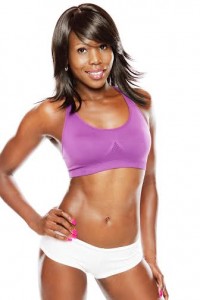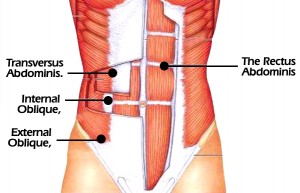On July 10, 2014, Kyrie Irving signed a contract extension with the Cleveland Cavaliers. In spite of the talented guard’s injury history, this would be “his team” for the near future.
That future lasted about 48 hours because on July 12, 2014, the Cavaliers brought back the region’s favorite son, LeBron James.
Despite bringing the city of Cleveland its first major sports championship in 52 years when the Cavs won the 2016 NBA title, the two never quite meshed the way the team envisioned. It is hard to tell whom wanted a change first: Kyrie demanding a trade or LeBron ordering a trade. My money says Kyrie wanted to be THE MAN!
Fast-forward to this year’s playoffs, which saw the Kyrie-led Celtics win their first five games. This included a sweep over the Pacers and taking game one on the road in Milwaukee, over the top-seeded Bucks. Over that stretch, Kyrie was great, averaging over 23 points and 8 assists. His game one against the Bucks was one of the most efficient for a point guard in recent playoff memory, with 26 points and 11 assists on 57% shooting.
Then the whole roof collapsed!
The Celtics would lose the next four, becoming the first team in NBA history to win its first 5 of a playoff and then be swept away. While Kyrie certainly was not the only culprit, he was, by any account, bad. His scoring fell off by 4 points, his assists fell off by 3, and he shot under 30%. He topped it off with a God-awful elimination game performance, during which he shot 6 of 21 with 1 assist, ZERO rebounds, and 3 turnovers. Then the questions about his future in Boston, already swirling, were elevated. Given the Celtics’ stockpile of draft picks and the development of its current young talent last year, in no small part due to Kyrie’s injuries, there is no reason to believe he will be back with the Celtics next year. If Kyrie’s objective was to be “THE MAN”, he got his wish and now must deal with the accompanying scrutiny that is the price of the party.
 What Kyrie is in the process of learning is that the difference between being a number 1 and number 2 extend beyond the court. On the court as the number 2 to LeBron, Kyrie would always have his way. He earned the nickname “Ankle Taker”. His first step and crossover make it virtually impossible for any defender in the NBA to stay in front of him. A team could theoretically take Kyrie away to make LeBron a scorer but when he drops 40 and you lose, that would be a lot of explaining to do for any coach. Off the court, when a team with LeBron loses, “The King” must answer the questions, even after his Herculean effort in the 2015 NBA finals. Is Kyrie built for that kind of life? The answer may be in a Clint Eastwood/Dirty Harry line. “Man’s gotta know his limitations.” That is to say that not every player, regardless of talent, is intended to be a top dog.
What Kyrie is in the process of learning is that the difference between being a number 1 and number 2 extend beyond the court. On the court as the number 2 to LeBron, Kyrie would always have his way. He earned the nickname “Ankle Taker”. His first step and crossover make it virtually impossible for any defender in the NBA to stay in front of him. A team could theoretically take Kyrie away to make LeBron a scorer but when he drops 40 and you lose, that would be a lot of explaining to do for any coach. Off the court, when a team with LeBron loses, “The King” must answer the questions, even after his Herculean effort in the 2015 NBA finals. Is Kyrie built for that kind of life? The answer may be in a Clint Eastwood/Dirty Harry line. “Man’s gotta know his limitations.” That is to say that not every player, regardless of talent, is intended to be a top dog.
The hopeful piece is that Kyrie is from a highly eclectic background.
He was born in Melbourne, Australia, a country that is in the midst of trying to deport Aboriginal (folks Native to the land) people without “citizenship”. His father is from the Bronx and his Native American mother was adopted. She passed away when he was four and it was not until years later that Kyrie would come to fully understand his heritage. Last August, he was invited to Standing Rock as a sort of homecoming. Yes, the same Standing Rock where the mighty Sioux and many others have been resisting the Dakota pipelines from going through their sacred ground. Yes, the same Sioux once led by the great freedom fighter Tatanka Iyotake or better known as Sitting Bull! Yes, the same Sitting Bull that gave General Custer “the business” at Little Bighorn. By all accounts, Kyrie has fully embraced this. The Sioux gave him the name “Hela”, which in the Lakota language means “Little Mountain”. Kyrie donated $100K to the Standing Rock resistance cause. He asked and was granted the privilege of shaking the hands of every one of the estimated 1000 in attendance that day. He even has a shoe out through Nike honoring Standing Rock (not sure how much of those proceeds go to the tribe). Given that basketball has long been the most popular sport on most Native American reservations, this was all a big deal.
So, does all this mean that Kyrie is indeed a number 1 Alpha, capable of leading a team to an NBA title? The jury is still out on that matter. Other than his “Earth is flat” comment, Kyrie strikes me as a thoughtful person. The answer will at least in part be contingent on which ego Kyrie decides to follow. Every professional athlete has two egos: one that is primarily self-serving and the other that is competitive. The champions allow the competitive ego to lead. If Kyrie does this, it will require him to modify his game. For example, his career numbers of 22.2 points and 5.7 assists are in line with the current trend of score first, distribute second, modern point guards. That will not get it done. However, 17-18 points with 8-10 assist may move him closer to a title…if he is willing to allow for a co-star.
My feeling is that he will allow the competitive ego to rule the day. If he does, do not bet against Kyrie Irving having his own Little Bighorn moment.





